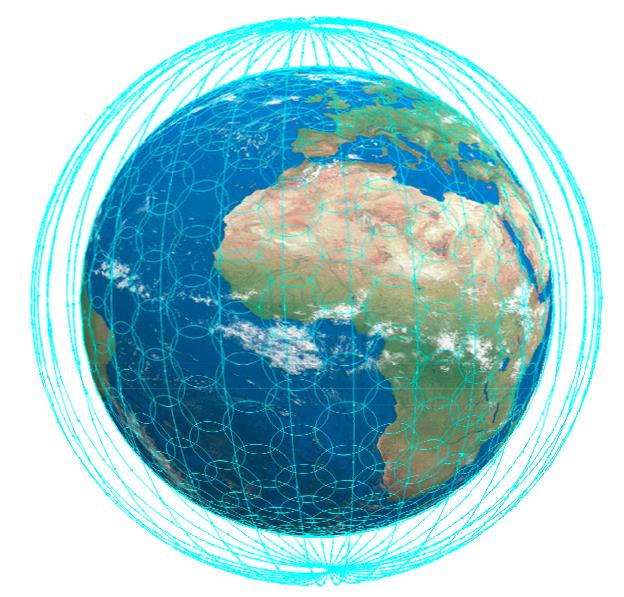Satellites, Constellations and Connectivity
Will thousands of microsats bring the Internet to all?

There’s a constellation of constellations being deployed to serve the last mile. More than 10,000 new birds are to be launched, making the 2-digit constellations of Iridium and Teledesic quaint by comparison. Though the idea is not very different. Extend coverage to the nooks and crannies of the planet and soon everyone will be using the Internet.
More than 15 years after Iridium’s initial launch, the idea is still revolutionary. Half of the world ’s population remains off the Internet. At just US$1.00 a month per person, this could generate nearly $5 billion a year from the Internet-less billions on our planet. No wonder OneWeb, SpaceX, Amazon, Boeing, Telesat, and soon China’s Hongyun, are looking to serve all these Internet newcomers.
One constellation will offer 4425 satellites, another 3236, a third 2900. This should do it—if the issue is coverage. Getting the monthly bill to those without Internet service is another matter; so is having them pay for the service—with billions of households still without credit cards, mobile payment apps, bank accounts and postal service.
All the more reason for the constellations to know what it will take for non-Internet users to become semi-regular ones. The top ten preconditions, not to mention wanting to use the Internet, are listed below. They come straight from our field research.
- A handset or terminal that can connect to the Internet,
- The means to buy the handset or terminal—even a $30 smartphone (yes, they exist) can be more than 20% of annual disposable cash for a poor plot farmer in Bangladesh or the Congo,
- A way to charge and recharge the handset, with 1.2 billion earthlings still without access to electricity or solar panels,
- The infrastructure that makes it all possible, including village satellite transceivers plus related security, maintenance, billing and customer service,
- Knowing how to read and write—this excludes about 800 million adults (until easy to use oral interfaces become available),
- Knowing a language used on a lot of websites, especially English, which is used on half of all websites but which only one in seven can read and write,
- Digital literacy, knowing how to log on and navigate the web, helps too, otherwise “access” does not translate to usage,
- Overcoming handicaps, including providing reading glasses to the billion of us who cannot afford them,
- A quiet, temperate place is also neede for most extended Internet use (yet how many households have temperature control?), and
- A WiFi zone where the Internet can be otherwise accessed in a less temperate setting.
The bad news is that having constellations of 10,000 micro-sats will not eliminate these challenges. The good news is that the new constellations are starting to understand all this. They realize they need local partners to enable the Internet connections, content sources in local languages, landing permits and spectrum, and working relations with development banks, governments, and terrestrial operators. Otherwise their claim to providing connectivity “faster than fiber” will remain a theory.
All this takes time—but more good news. It takes more time to place three or four thousand satellites into orbit than it took with the smaller constellations, even when launching them 50 at a time. Much of the preparation can meanwhile be accomplished.
1. A handset or terminal that can connect to the Internet,
2. The means to buy the handset or terminal—even a $30 smartphone (yes, they exist) can be more than 20% of annual disposable cash for a poor plot farmer in Africa,
3. A way to charge and recharge the handset, with 1.2 billion of us still without access to electricity or solar panels (which, by the way, are often poached),
4. The infrastructure that makes it all possible, including village satellite transceivers plus related security, maintenance, billing and customer service,
5. Knowing how to read and write—this excludes about 800 million adults (until easy to use oral interfaces become available),
6. Knowing a language used on a lot of websites, especially English, which accounts for half of all websites but which only one in seven persons can read and write,
7. Digital literacy helps too, otherwise “access” does not translate to usage,
8. Overcoming handicaps, including providing reading glasses to the billion of us who cannot afford them,
9. A quiet, temperate place (other than for checking incoming texts on the go)—yes, most extended Internet use occurs in places with temperature control, and, for the rest,
A WiFi zone where the Internet can be accessed in a less temperate setting. View Printer Friendly Version
View Printer Friendly Version